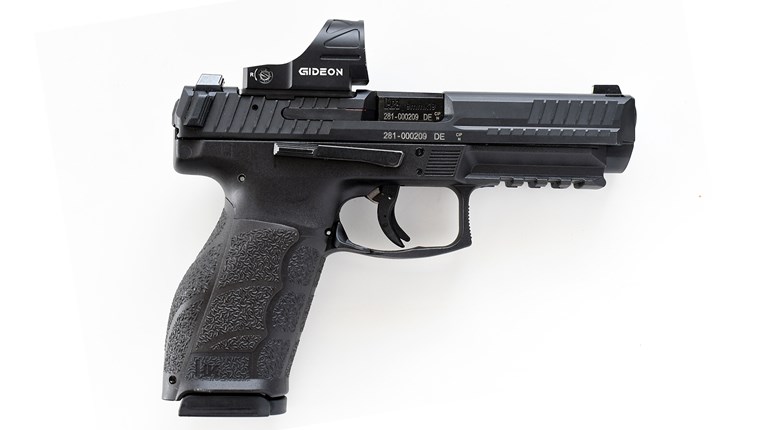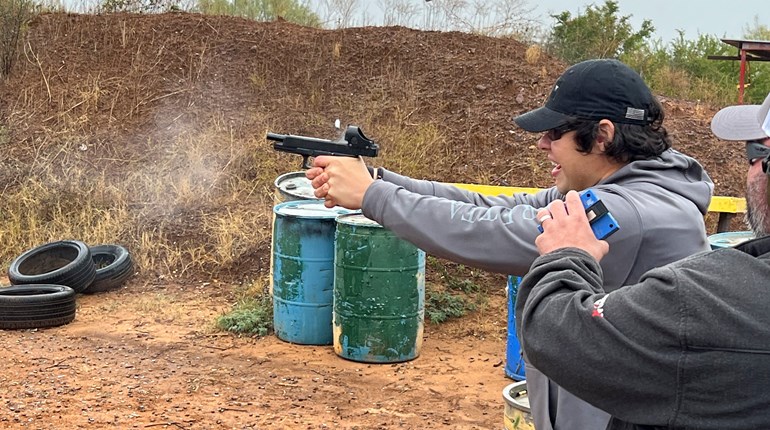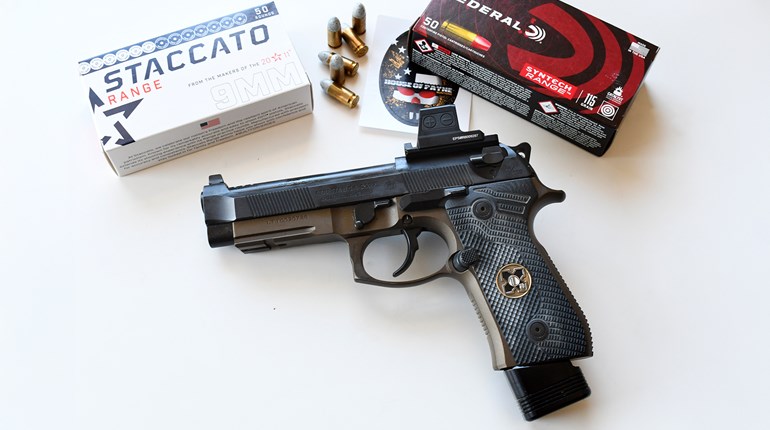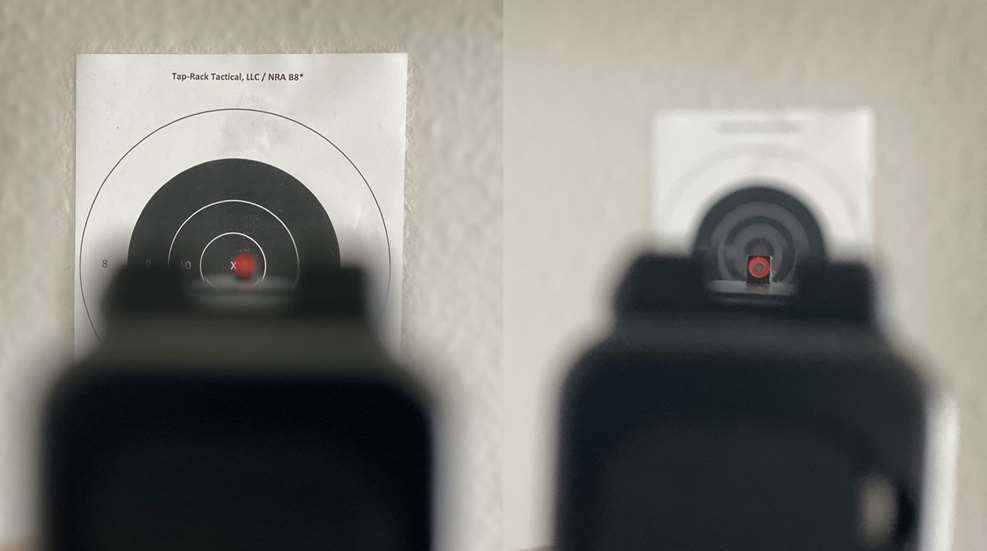
Most of us are taught to place that critical focus on the front sight of a handgun because in the United States, most institutions responsible for disseminated shooting knowledge are rooted in the classic and traditional discipline of bullseye shooting. In bullseye shooting, precision and accuracy are paramount, so everything is done with the intention of punching out the “X-ring,” the smallest and highest-scoring portion of the target. As a result, most of the wisdom and information passed down for generations link back to this type of precision shooting where every shot counts. For rifles and handguns that are equipped with iron sights, the best way to shoot precisely and consistently is to not only focus on the front sight but to hold the sight picture at 6 o’clock so that the sight does not “get lost” in the black. With a firearm that is correctly zeroed and its sights consistently lined up in this manner, each shot fired should theoretically land in the exact spot. Making these extremely precise shots typically takes more time as the human brain has to process everything: the sights themselves, and how the sight and the firearm sit in relation to the target.
Focusing On The Target
The late William Aprill was the first instructor who exposed me to target focus while attending a pistol class in north Texas in 2018 where he was a co-instructor. Dr. Aprill was an erudite and multi-talented man, and his pistol instruction is informed by Bill Rogers’ private shooting school where Dr. Aprill also trained as an instructor. At the Rogers’ Shooting School, target focus is considered a vital element of their shooting curriculum, and doing well on the series of “final exams'' at Rogers’ school is no small feat. Even highly experienced handgun shooters who wish to shoot a clean score have no room for error on these tests. Earning a perfect score requires a high level of deliberateness, mental concentration, economy of motion and focusing on the target instead of using iron sights. Trying to shoot these qualifications with a front sight focus will cost a shooter precious seconds and affect their overall scores. Rogers sheds some light on the origin of his target focus approach in his book, Be Fast, Be Accurate, Be The Best. As a young man, Rogers grew up in the South shooting clay and hunting with shotguns. As most shotgun shooters know, one is supposed to look at the bird, never the bead. Incidentally, this is target focus.
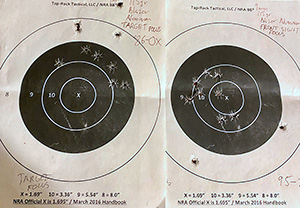
Rogers took his experience shooting moving targets with shotguns and adapted this to handgun shooting. Rogers’ stance on target focus was considered controversial for many years, but with the rise of slide mounted red dots on handguns, the mechanics of shooting with dots only validates Rogers’ approach. When it comes to shooting with target focus vs iron sights, the only difference is that the shooter must focus intensely on the target and then be ready to break the shot immediately at the moment their sight or dot intersects the line of sight from their eyes to the target. Focusing this way eliminates the time the human brain needs to process and focus on the front sight. It is no different than shooting a dove, a clay target or trying to hit a pitched baseball.
Front Sight vs Target Focus? Why Not Both?
Shooters should remember that shooting with a front sight focus and a target focus are both equally important skills. How you use them is going largely depend on context, the equipment being fielded and the shooting task at hand. Those who exclusively shoot pistols with slide mounted red dots might do well to stay engaged using target focus, as this is what makes pistols with dots shine.
Target focus on handguns with traditional iron sights is not challenging either. The concept is the same: shoot when the sight intersects the line of focus to the target. Having a highly contrasting front sight in a color like red, orange or yellow is helpful as bright colors more easily stand out from the background. The beauty of fiber optic sights and bright front sights is that they can be used as like a red dot optic to shoot quickly and efficiently with a target focus. Shoot with target focus at extended distances without a dot by focusing on the target just the same but with the added step of visually combining both your front and rear sight as a singular aiming block. The concept is the same: shoot when that “block” intersects your line of sight. This is a very coarse method and it may not always be appropriate, but I have personally done this to get reasonable center-mass hits on a silhouette target at 25 yards using a stock Glock 17. On the flip side, there is no question that for precision shots with iron sighted pistols, focusing on the front sight will almost always be the best course of action–this is why traditional bullseye target shooters did so in the first place. However, focusing on the target itself saves critical milliseconds that are wasted trying to find that “perfect” sight picture before breaking the shot and works well with a slide mounted electronic red dot sight.












